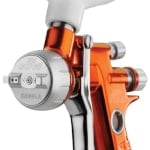|
|
|
Abrasion and Washability
 | Improved mechanical resistance to wear is a key requirement of a wide range of products. From coatings to clothing, leather to upholstery, keypads to plastic toys, a product's ability to resist wear is an important characteristic. There are testing methods relating to the 'abrasion by friction' concept. Others are based on the projection of abrasive particles on to the test specimen. These techniques provide valuable information about materials and processes. The three tests available are:
- Friction: one part moves relative to the other
- Scrubbing: wet or dry brush or sponge is moved over the test piece
- Blast: abrasive particles are projected on to the test specimen
Although it is difficult to correlate test performance with real life wear conditions, mechanical tests can make an accurate comparison. |
Improved mechanical resistance is part of today’s quality requirements. One important criterion for assessing this feature is abrasion resistance. Depending on the nature and purpose of the product, various testing methods are available.
There are testing methods are related to the “abrasion by friction” concept. Others are based on the projection of abrasive particles on to the test specimen. These techniques provide valuable information about materials and processes.
To meet industry’s growing needs for research and control, Elcometer develops, manufactures and supplies a range of instruments designed for wear resistance tests. Standardized or conventional, these tests are widely used for numerous applications.
|
Used primarily in the testing of ceramics, plastics, textiles, metals, leather, rubber and painted, lacquered and electroplated surfaces, accelerated wear test procedures have also been written into many test specifications including ASTM, ISO, TAPPI and DIN - as well as automotive manufacturing procedures around the world.
|
|
|
|
|
|
















